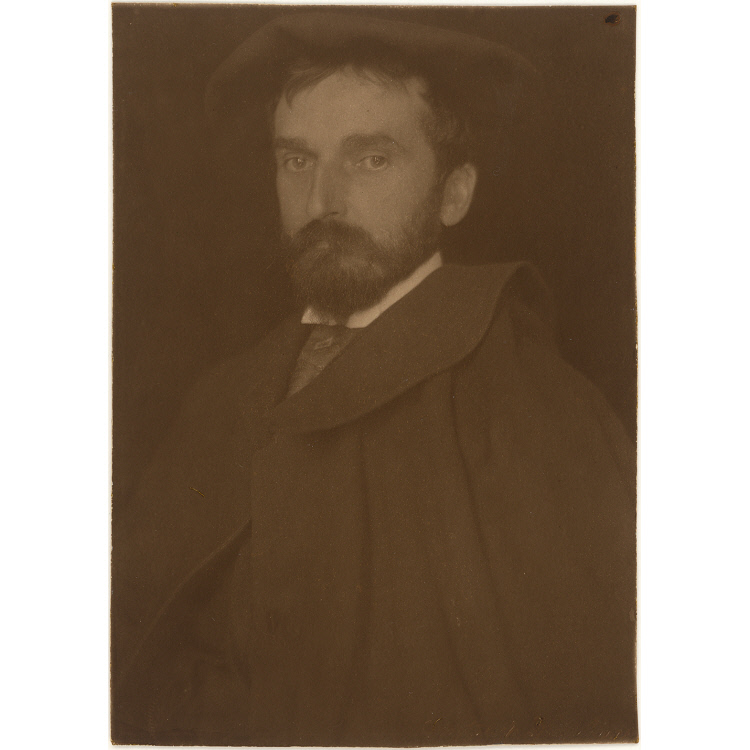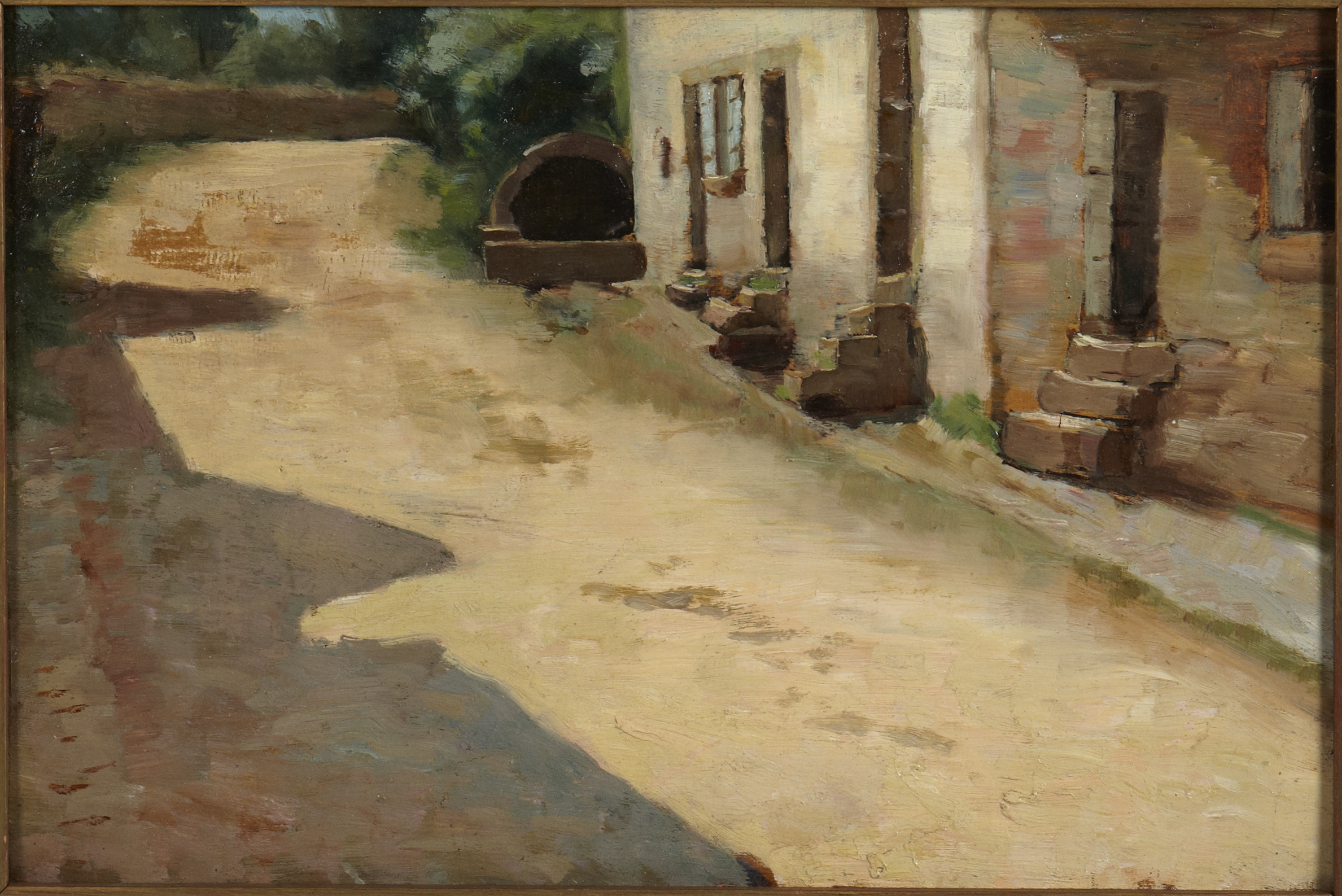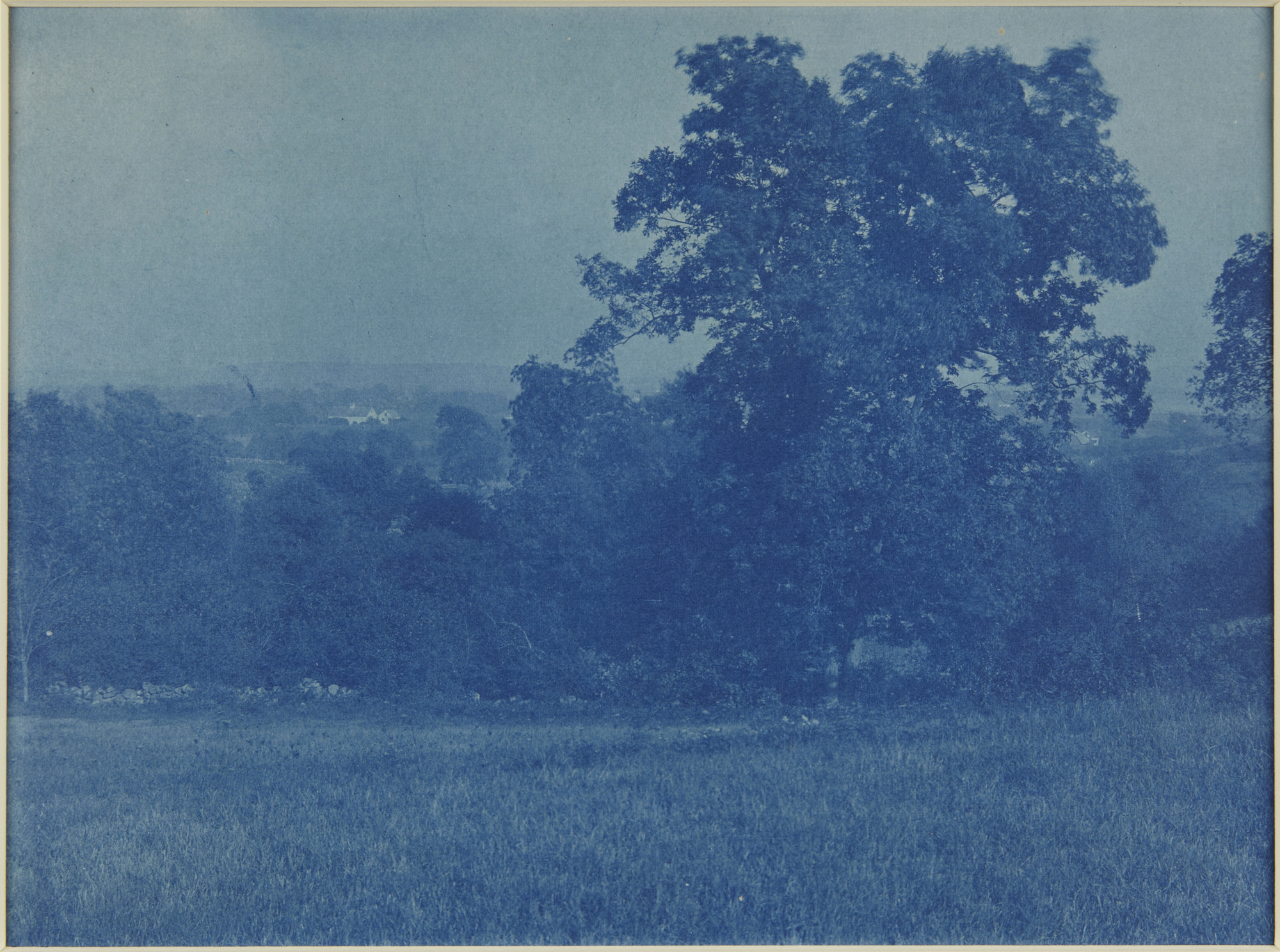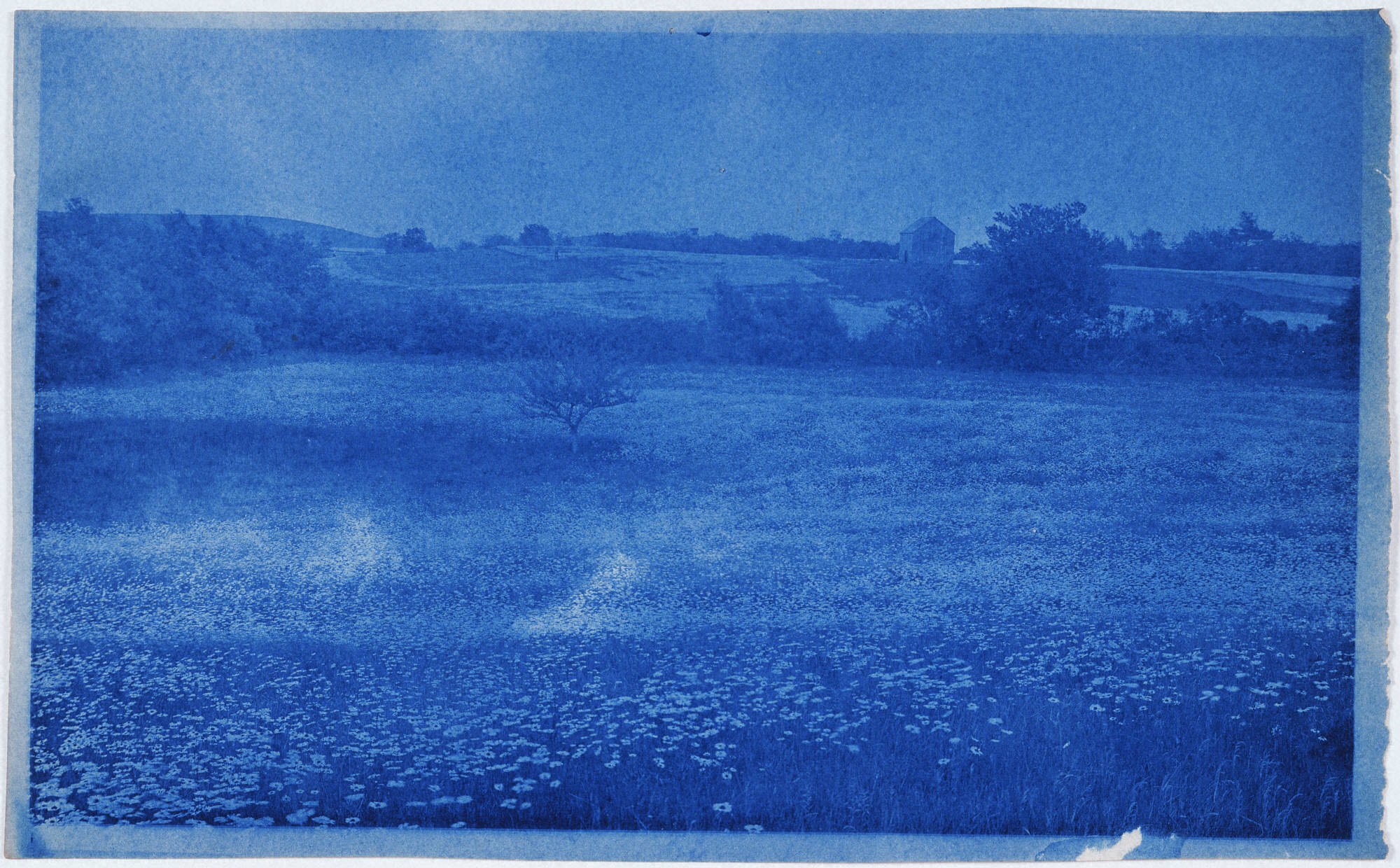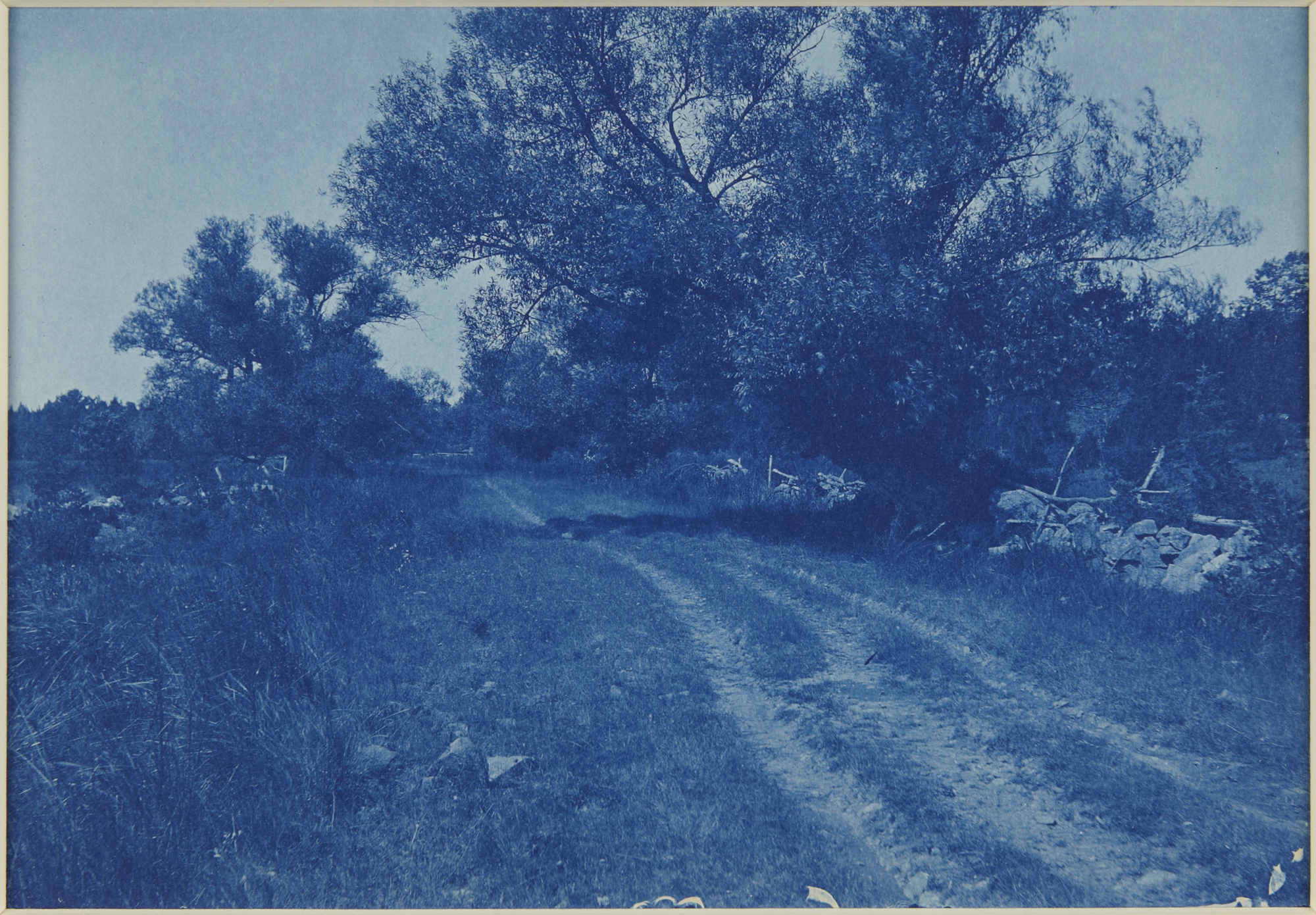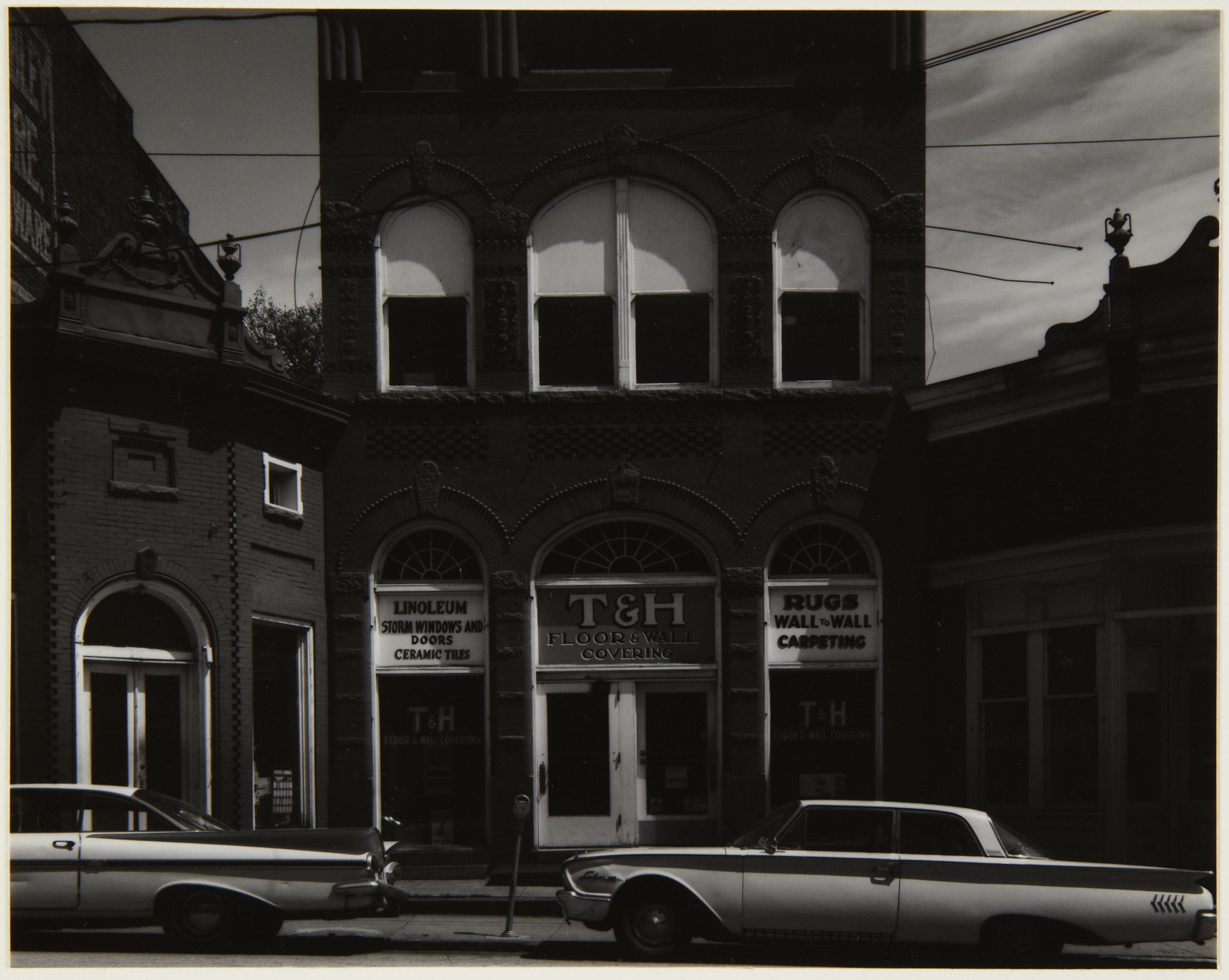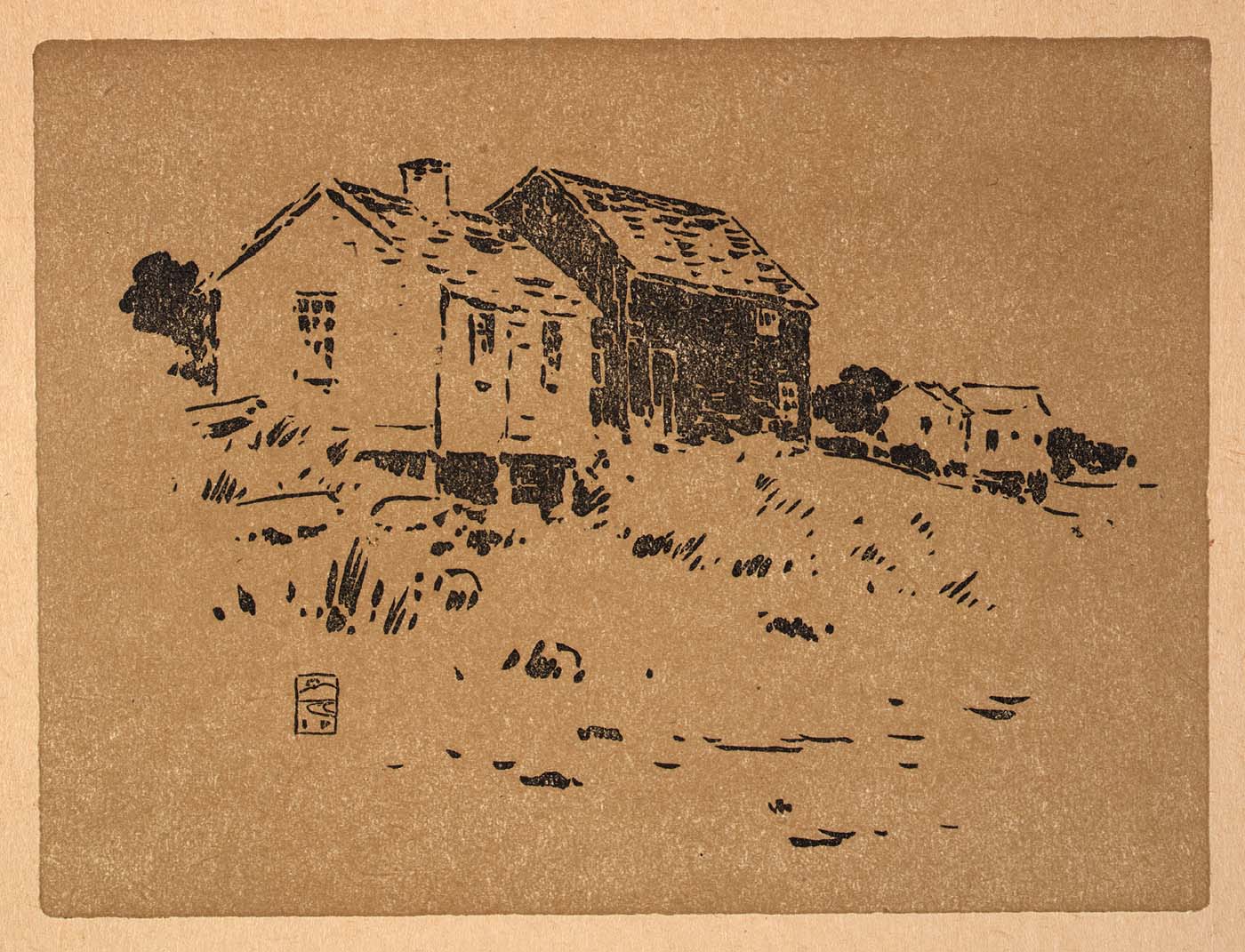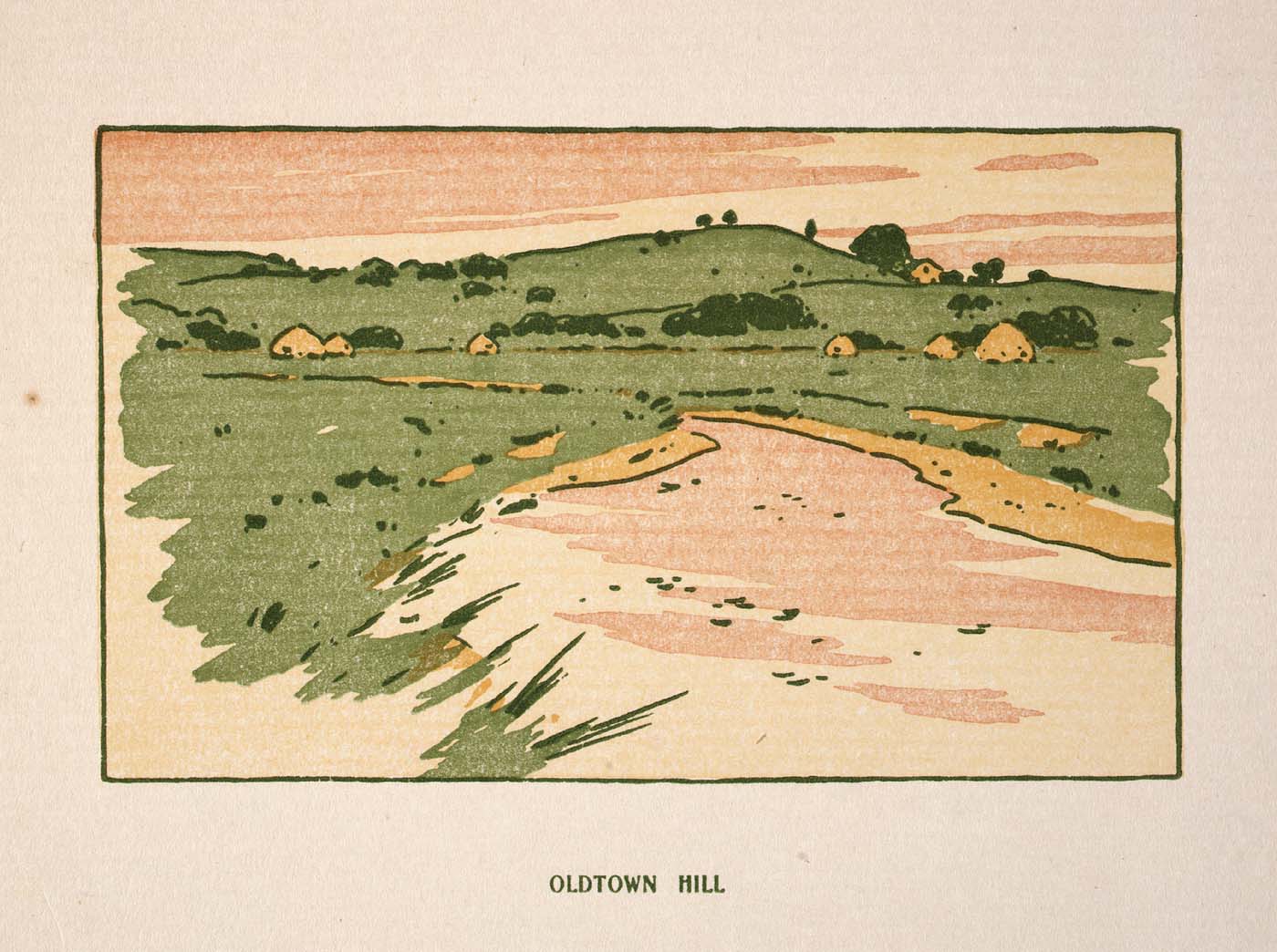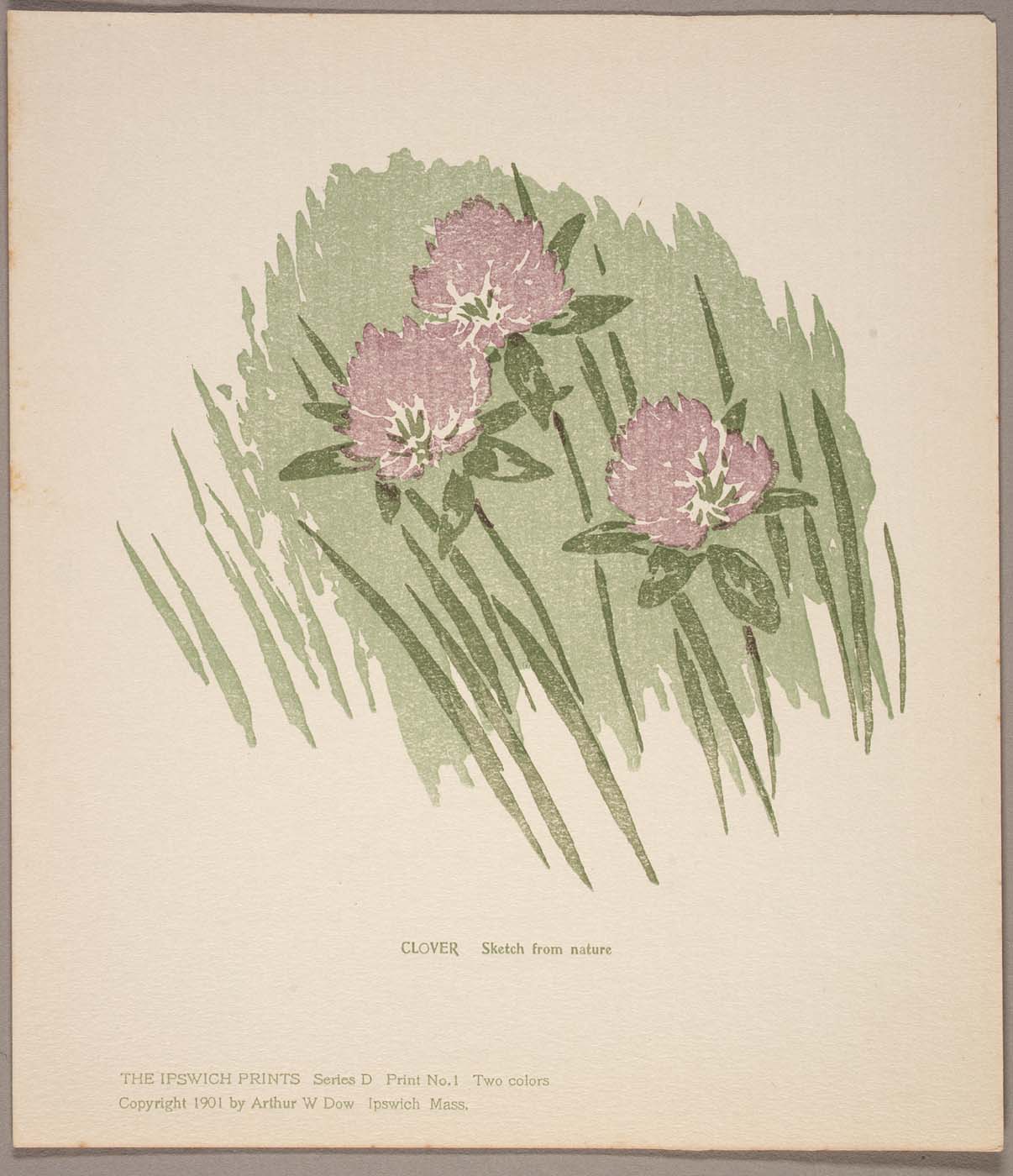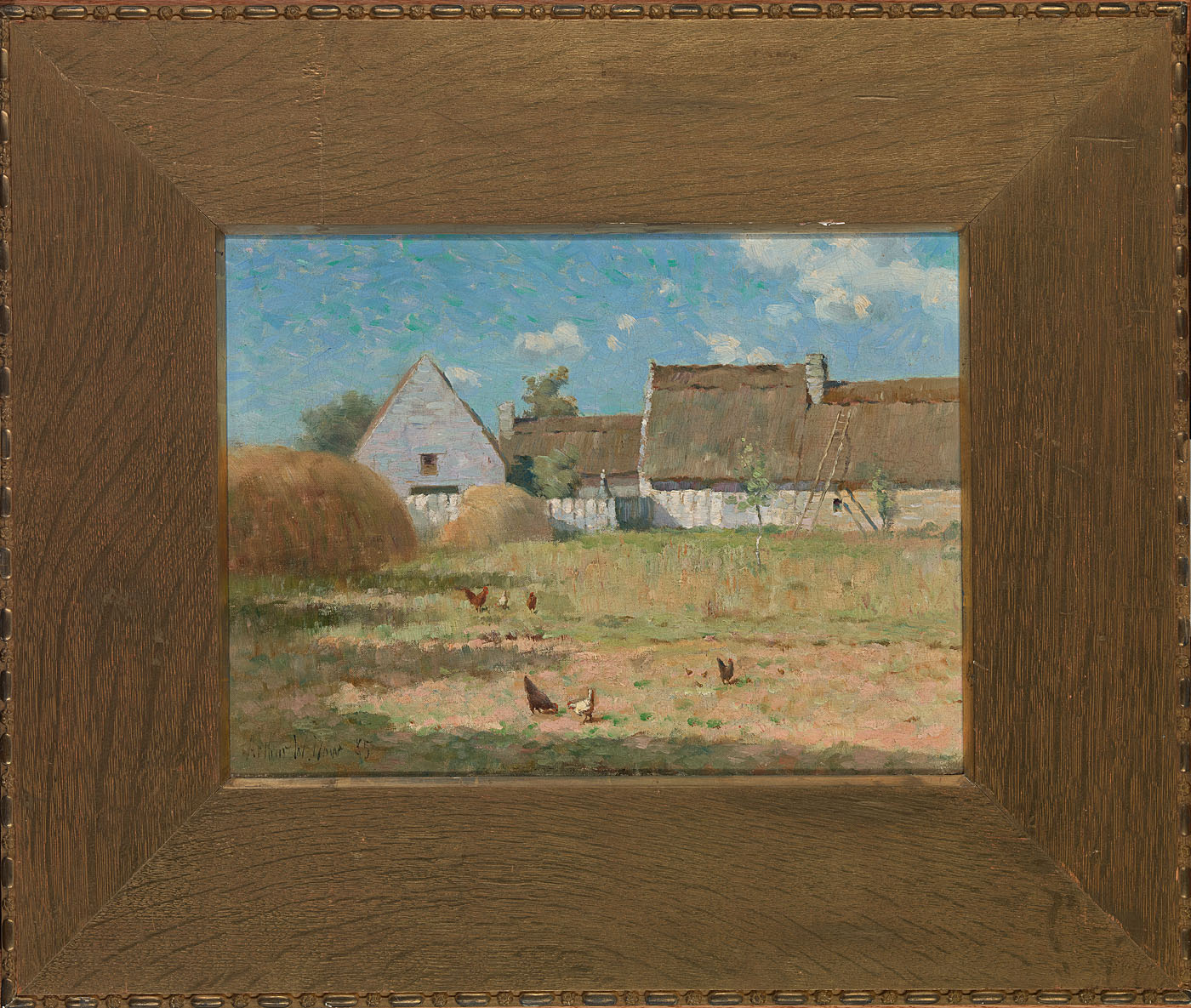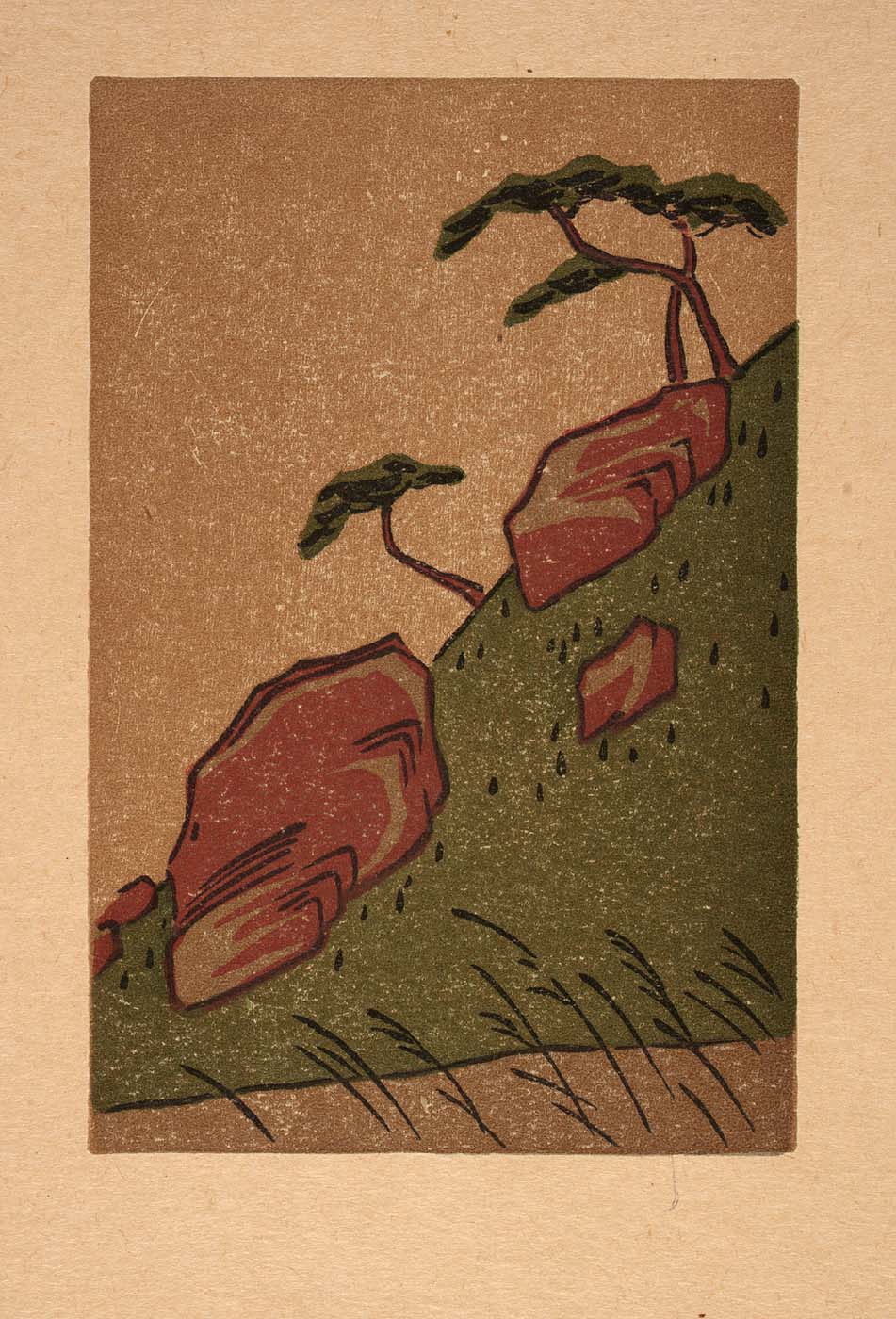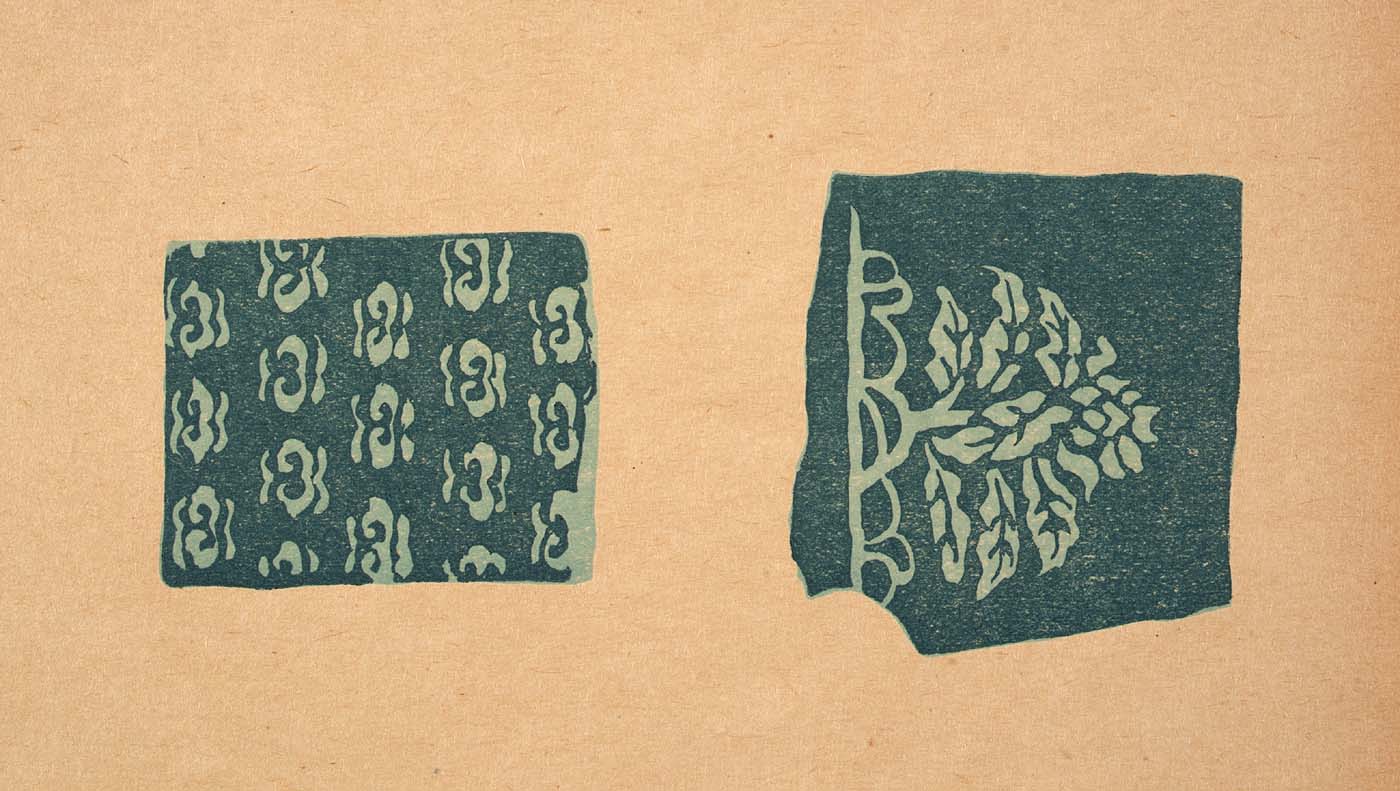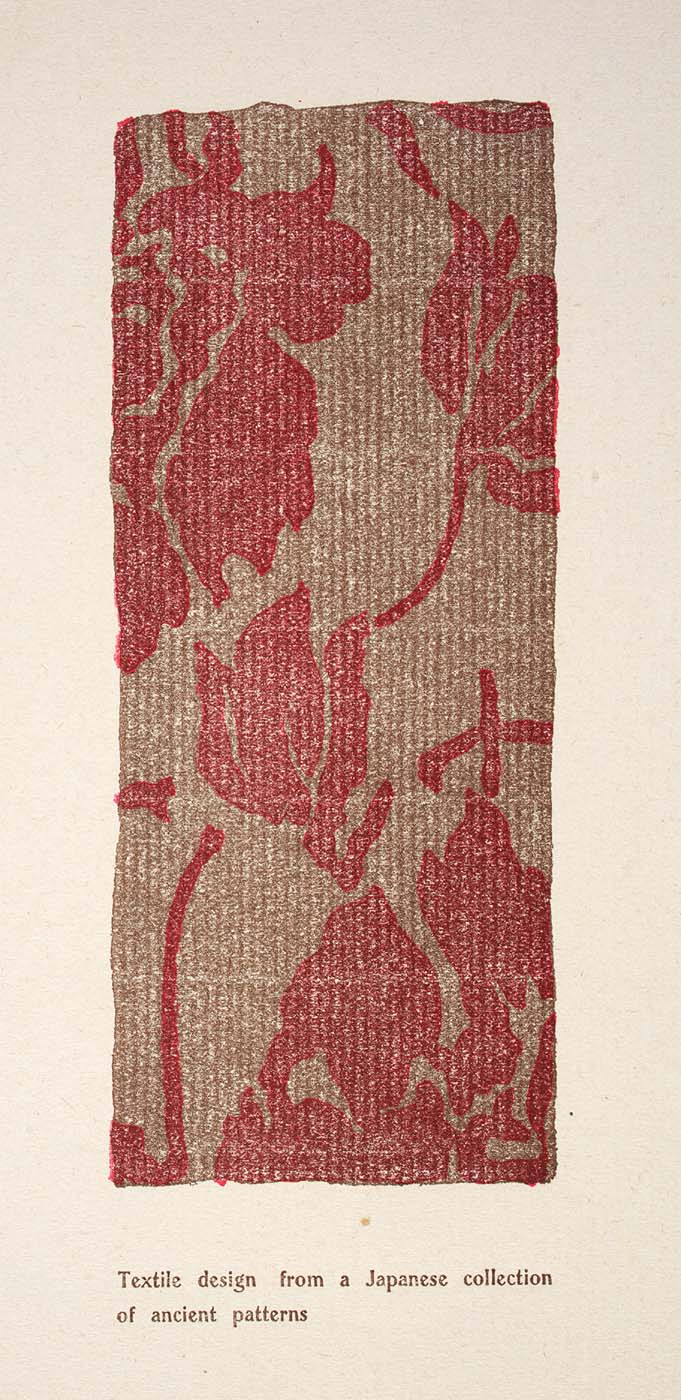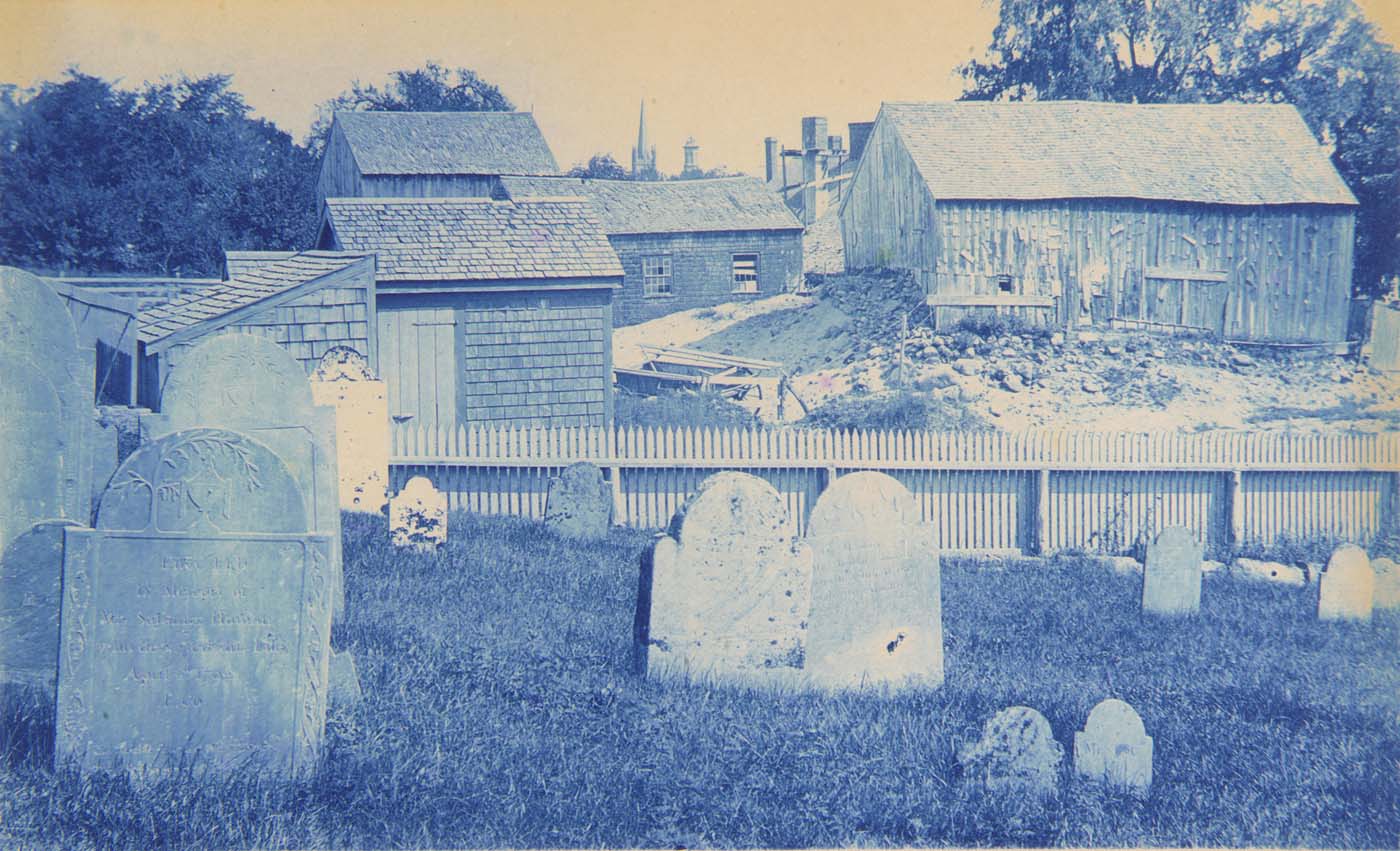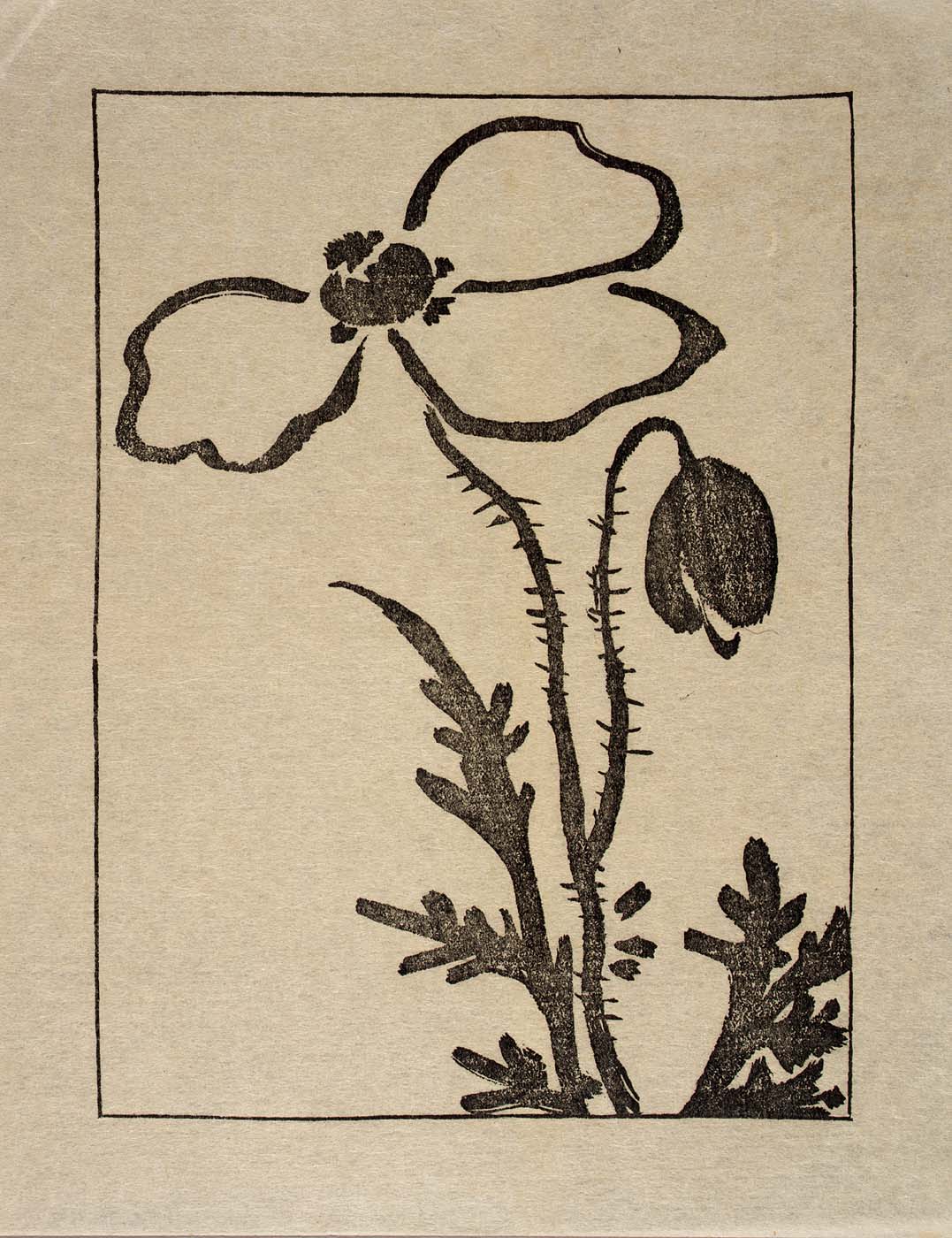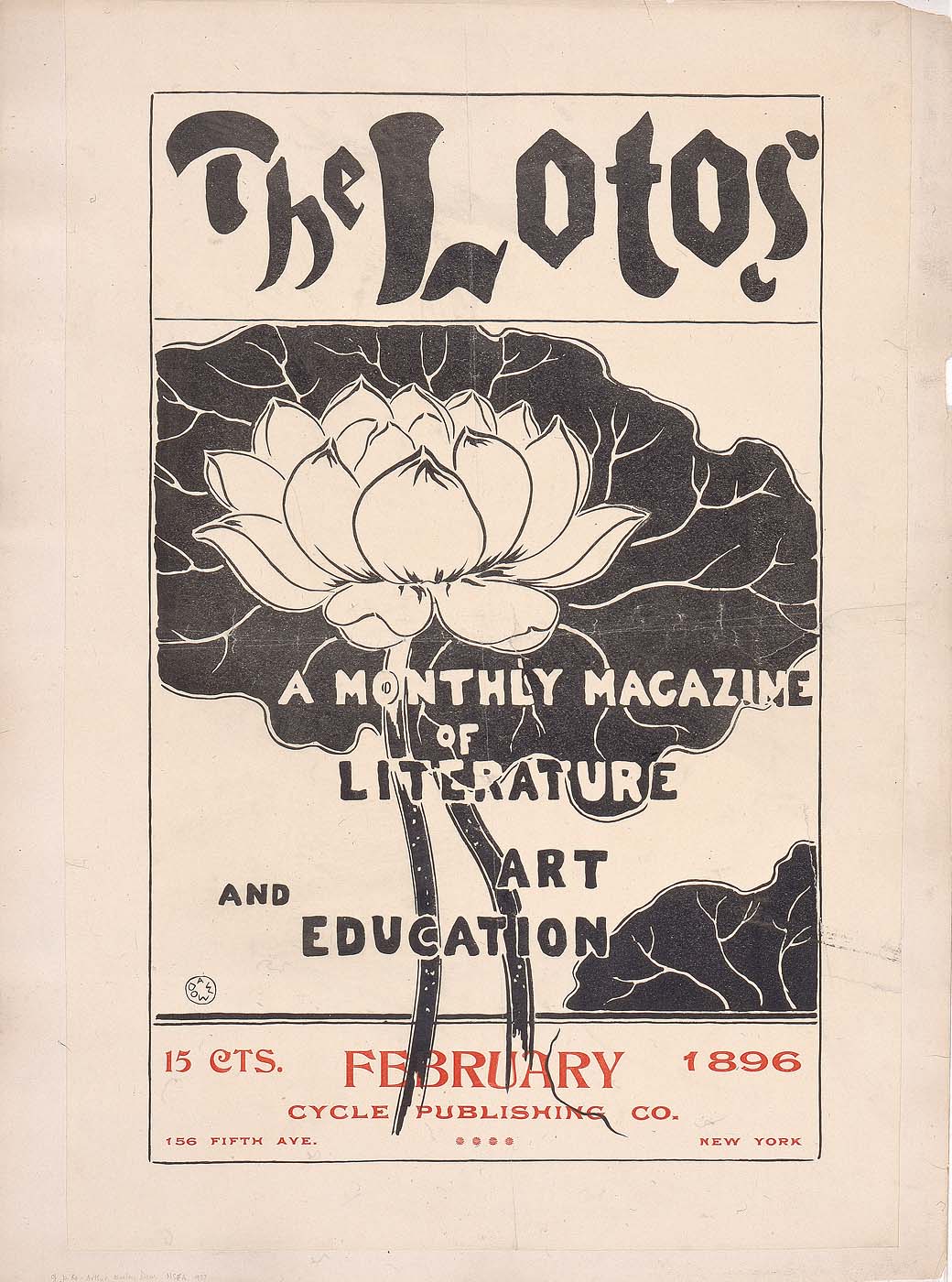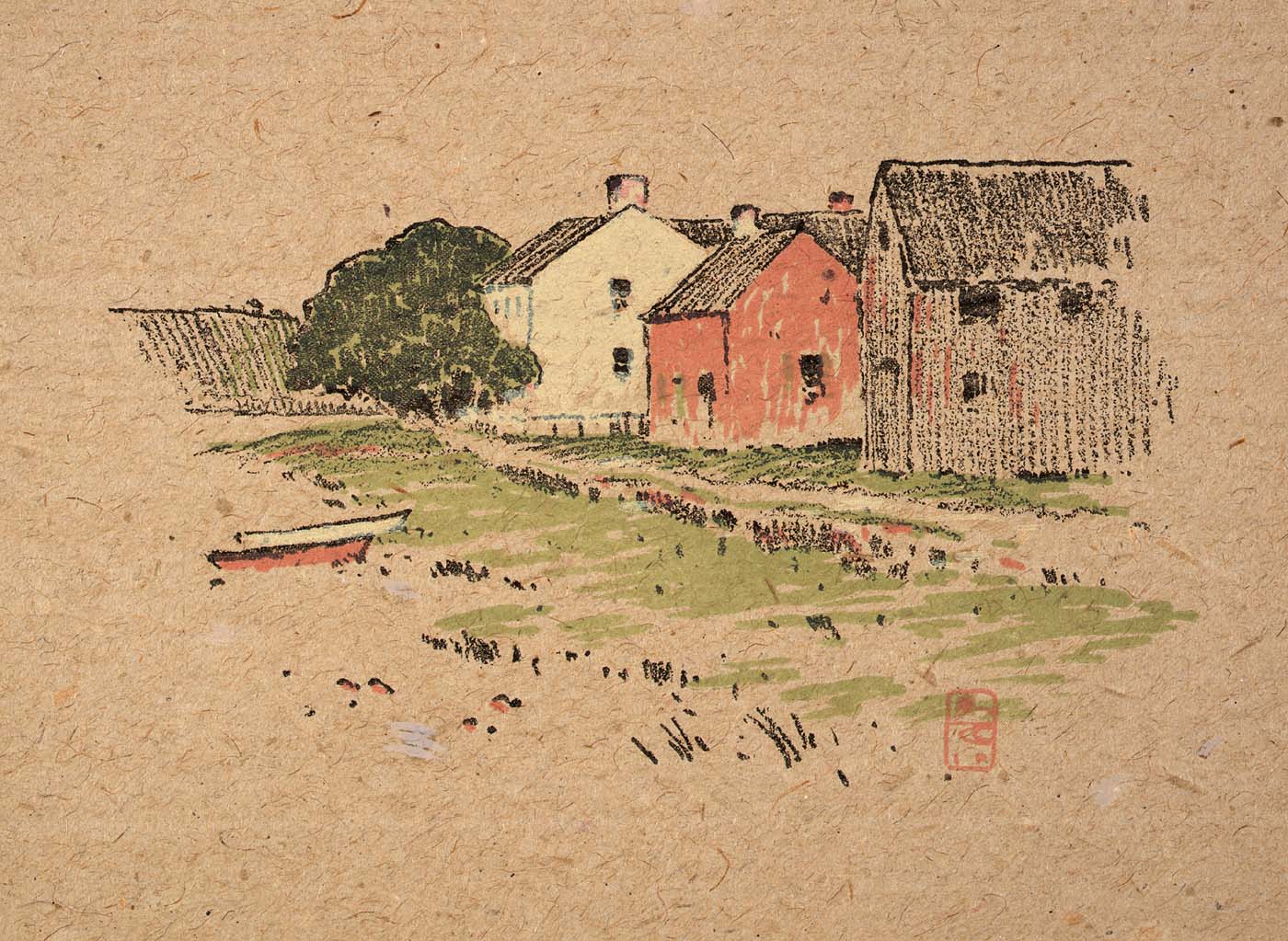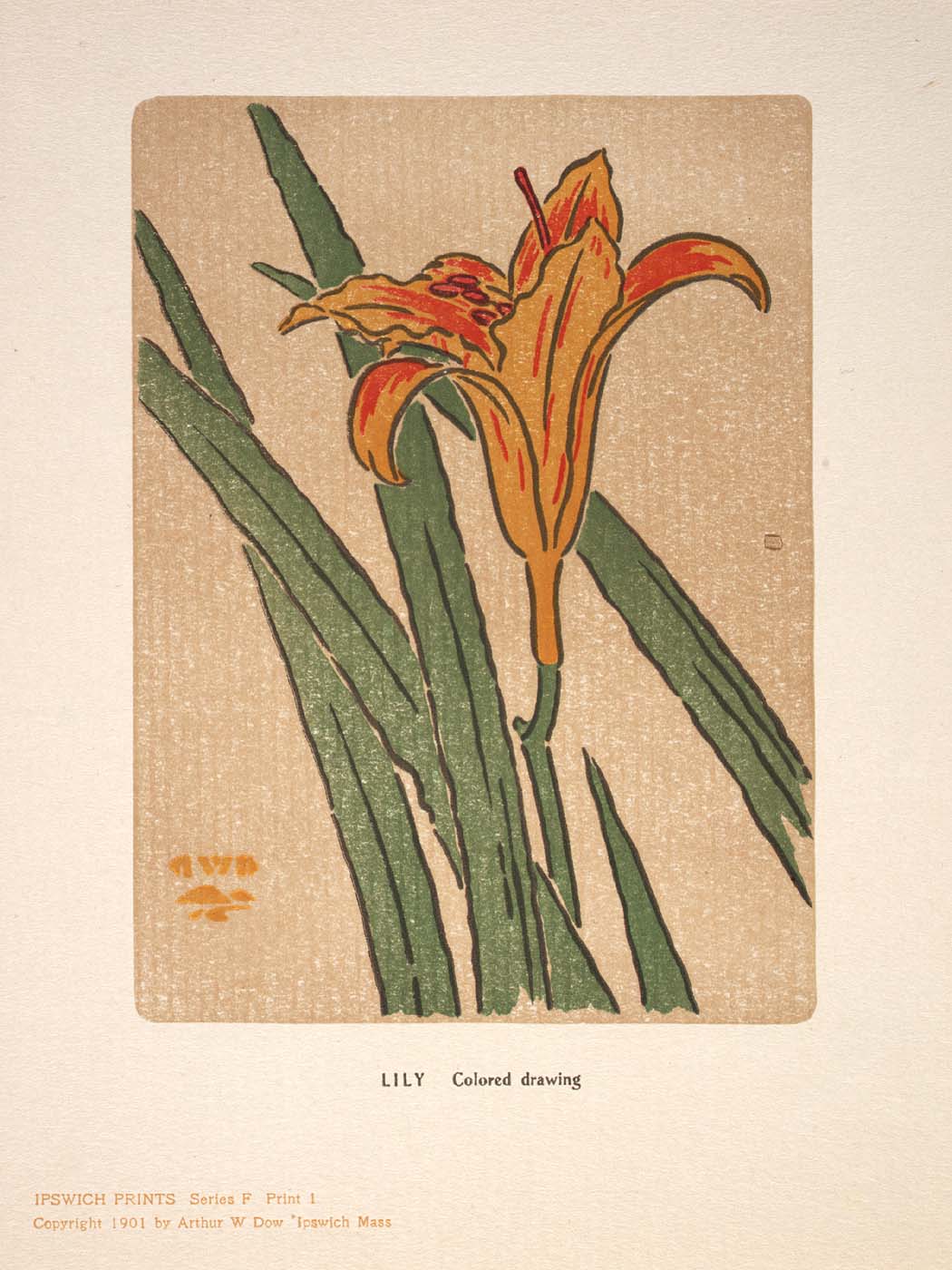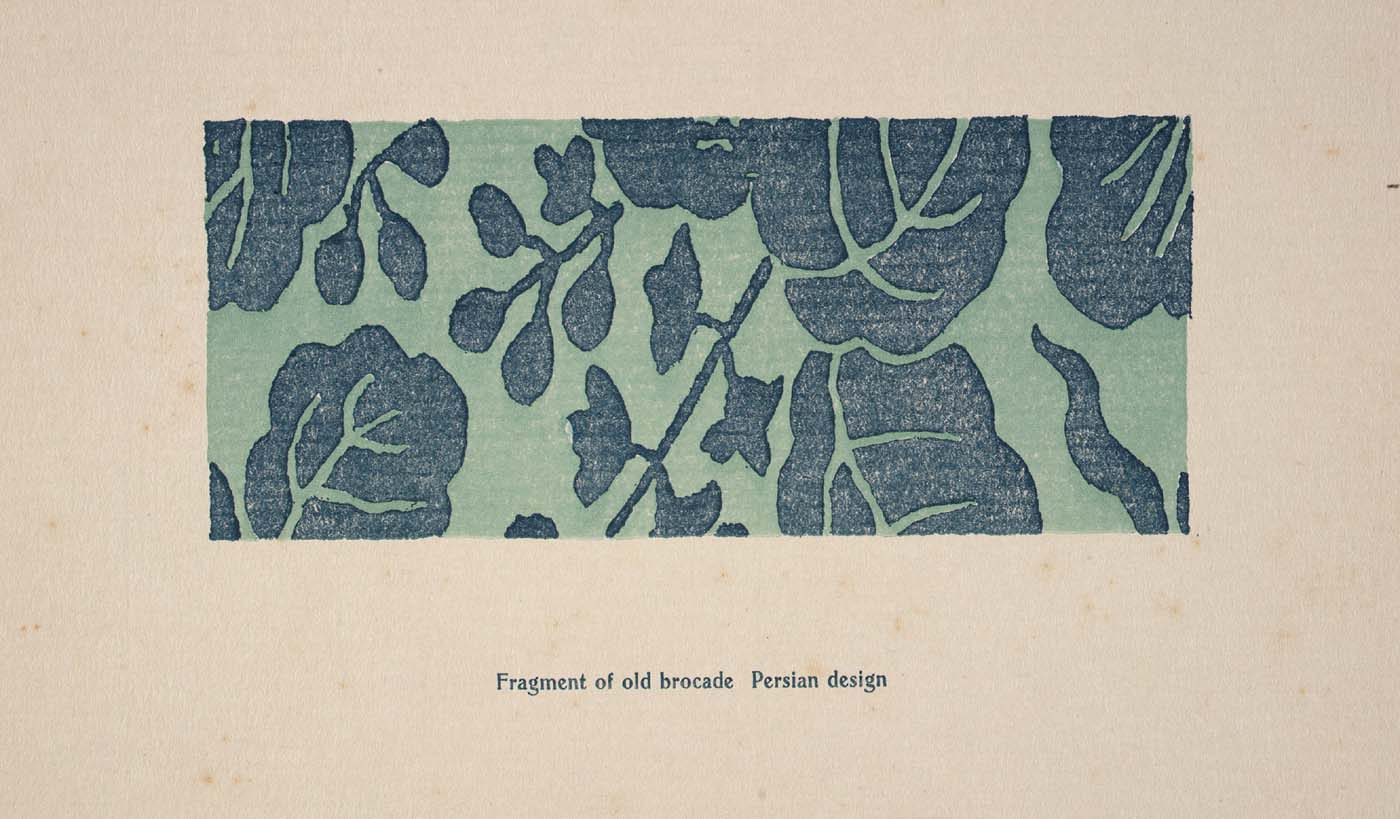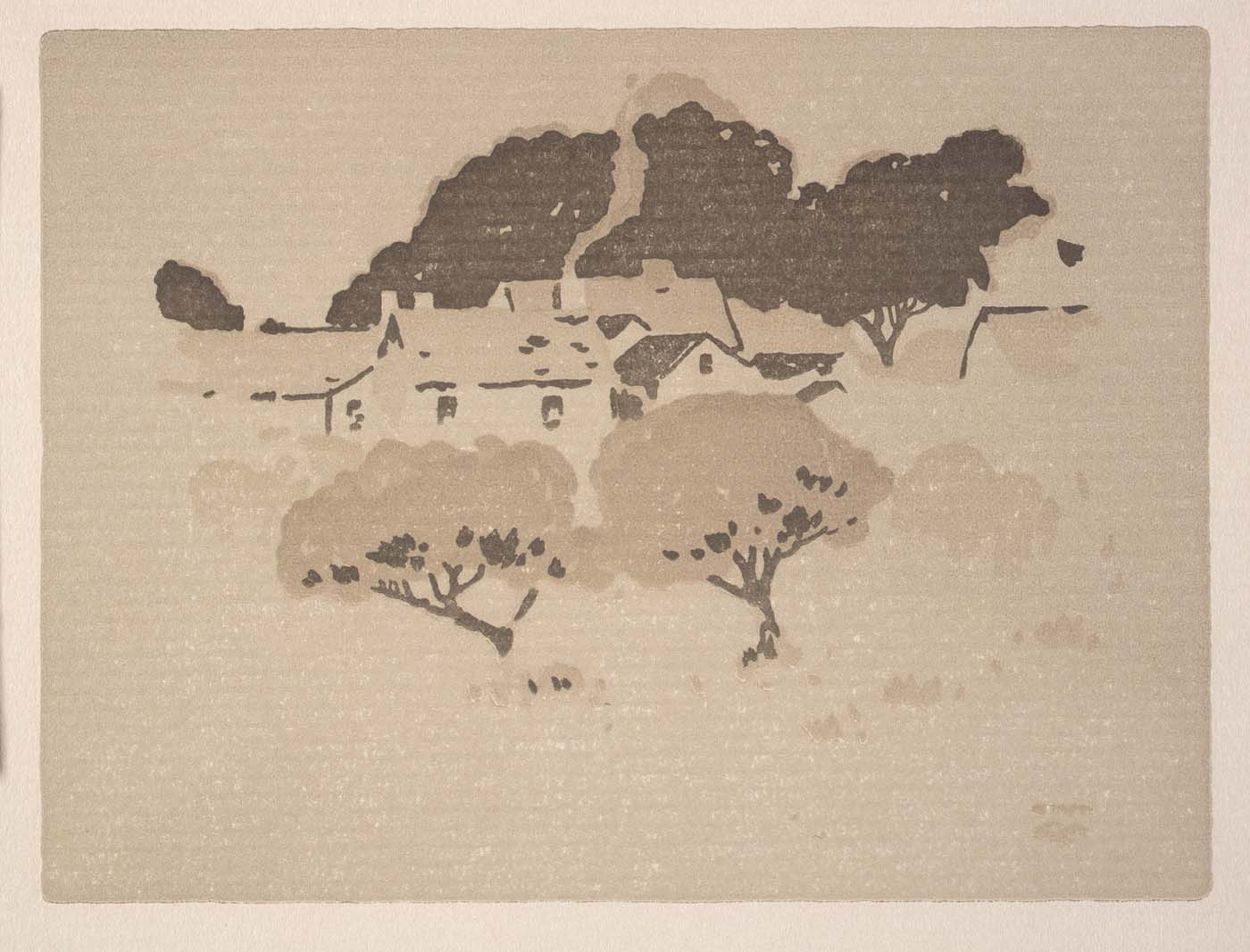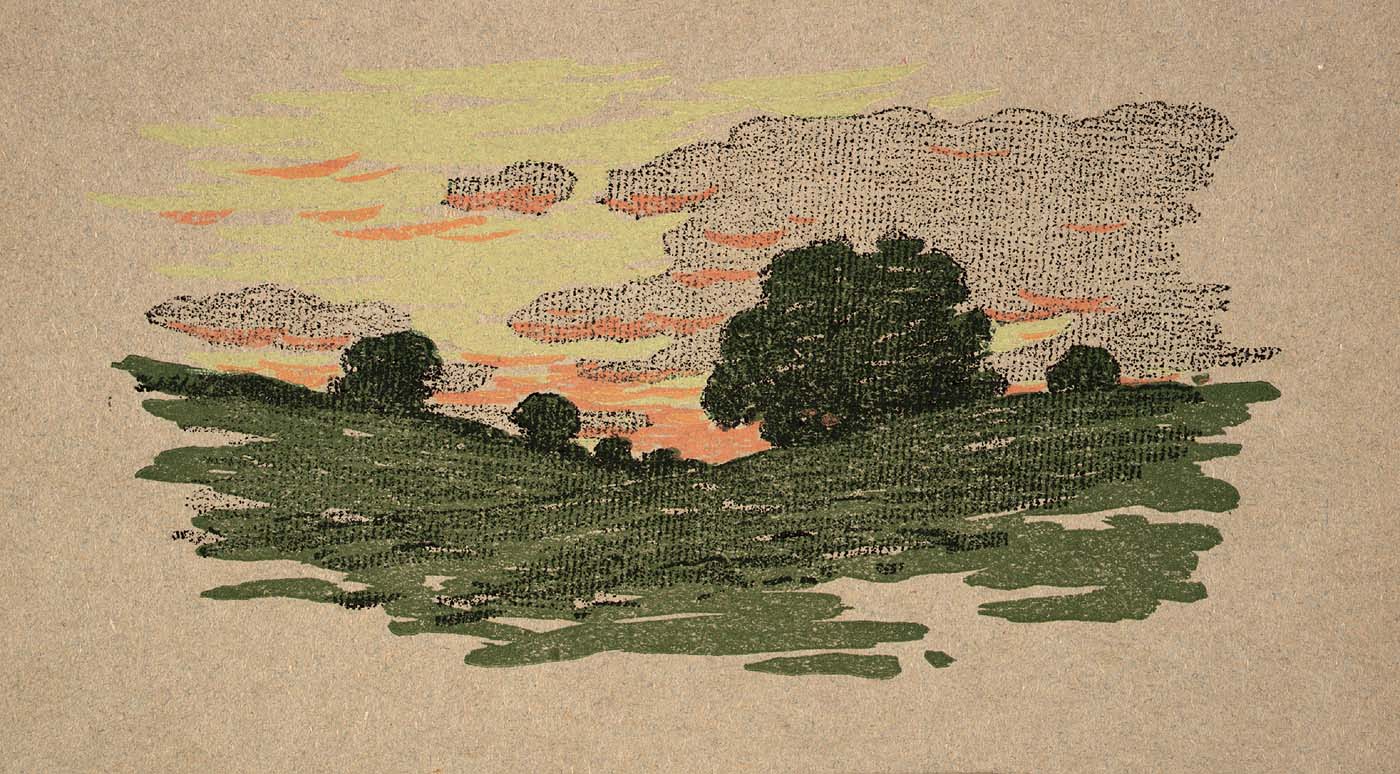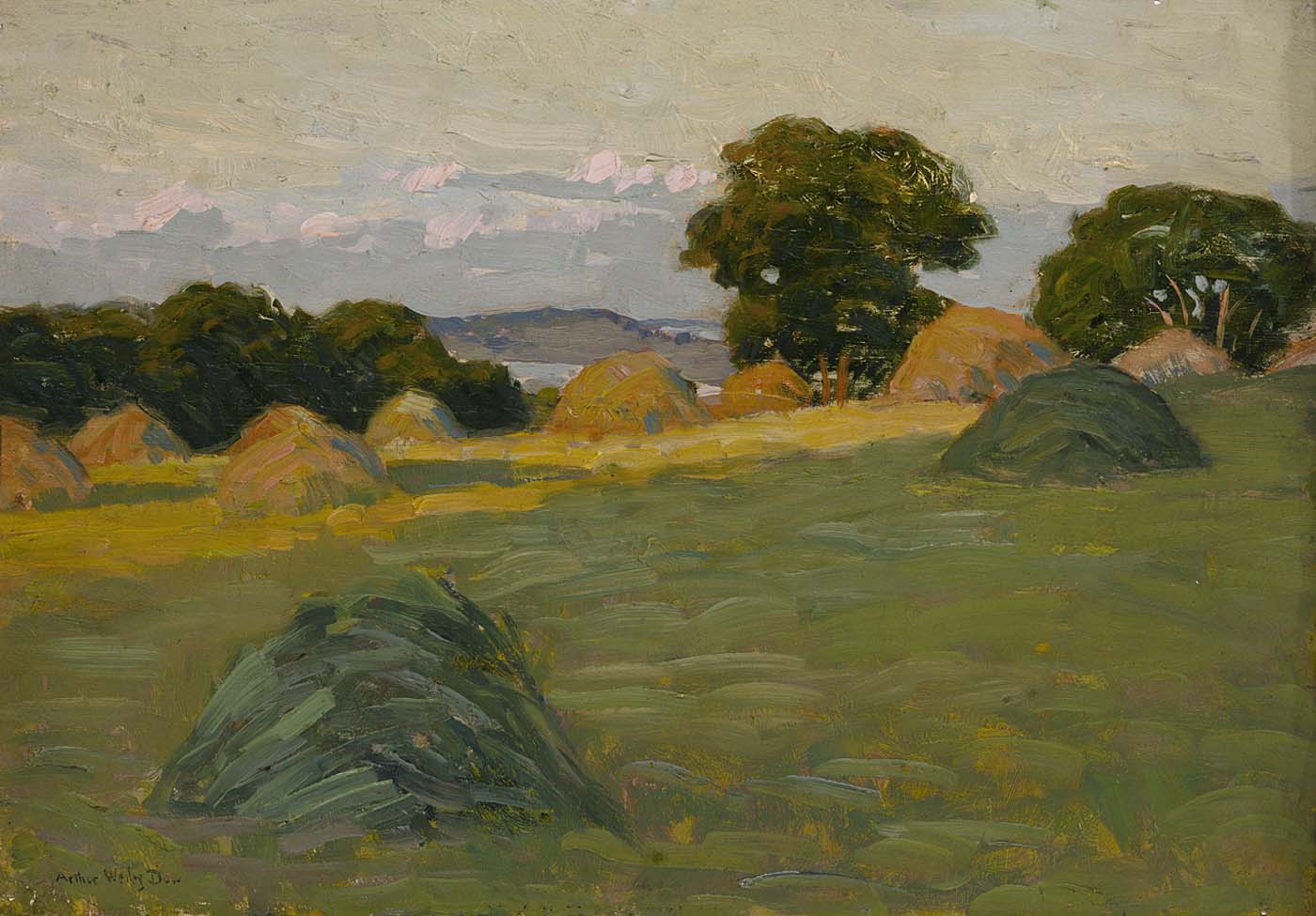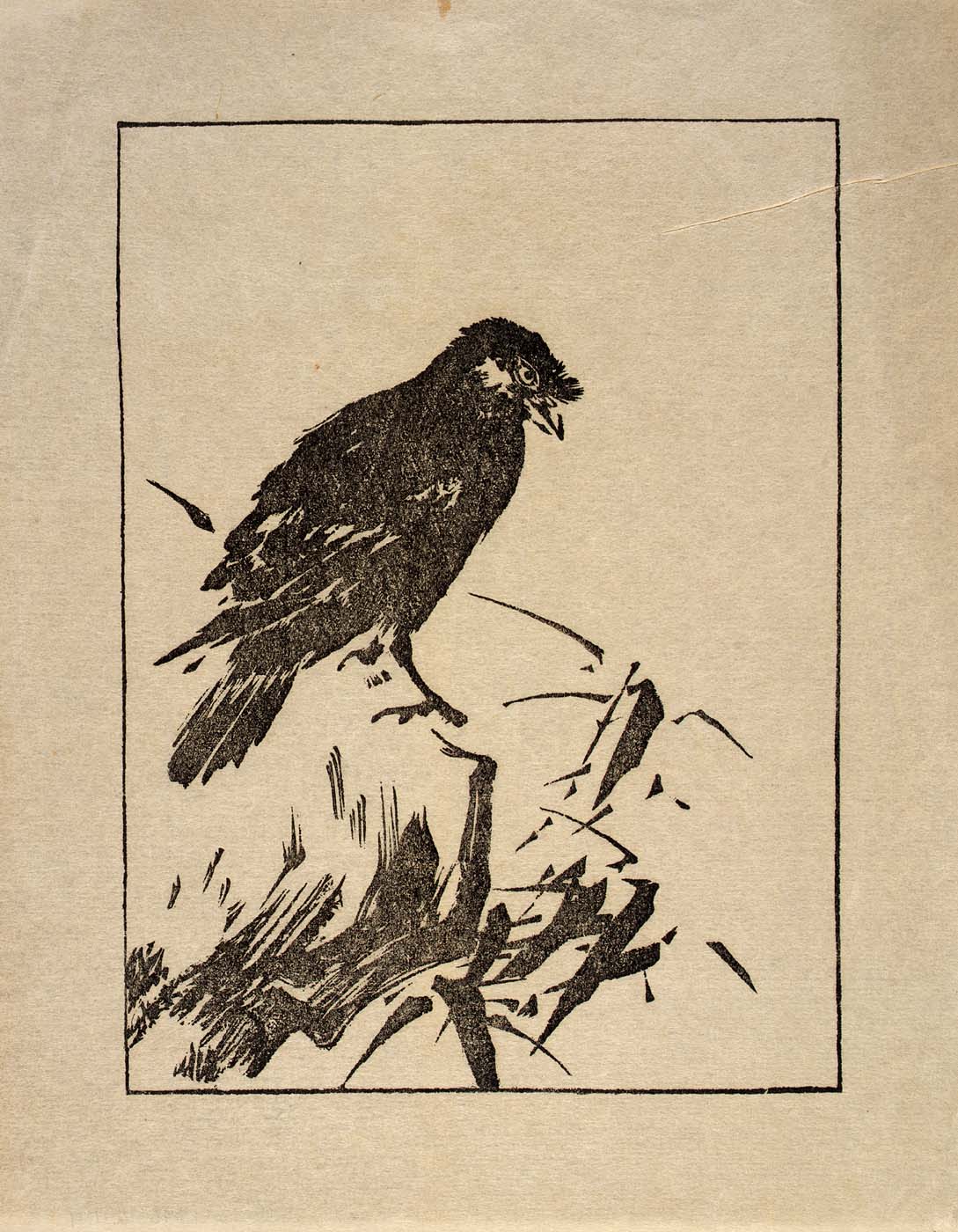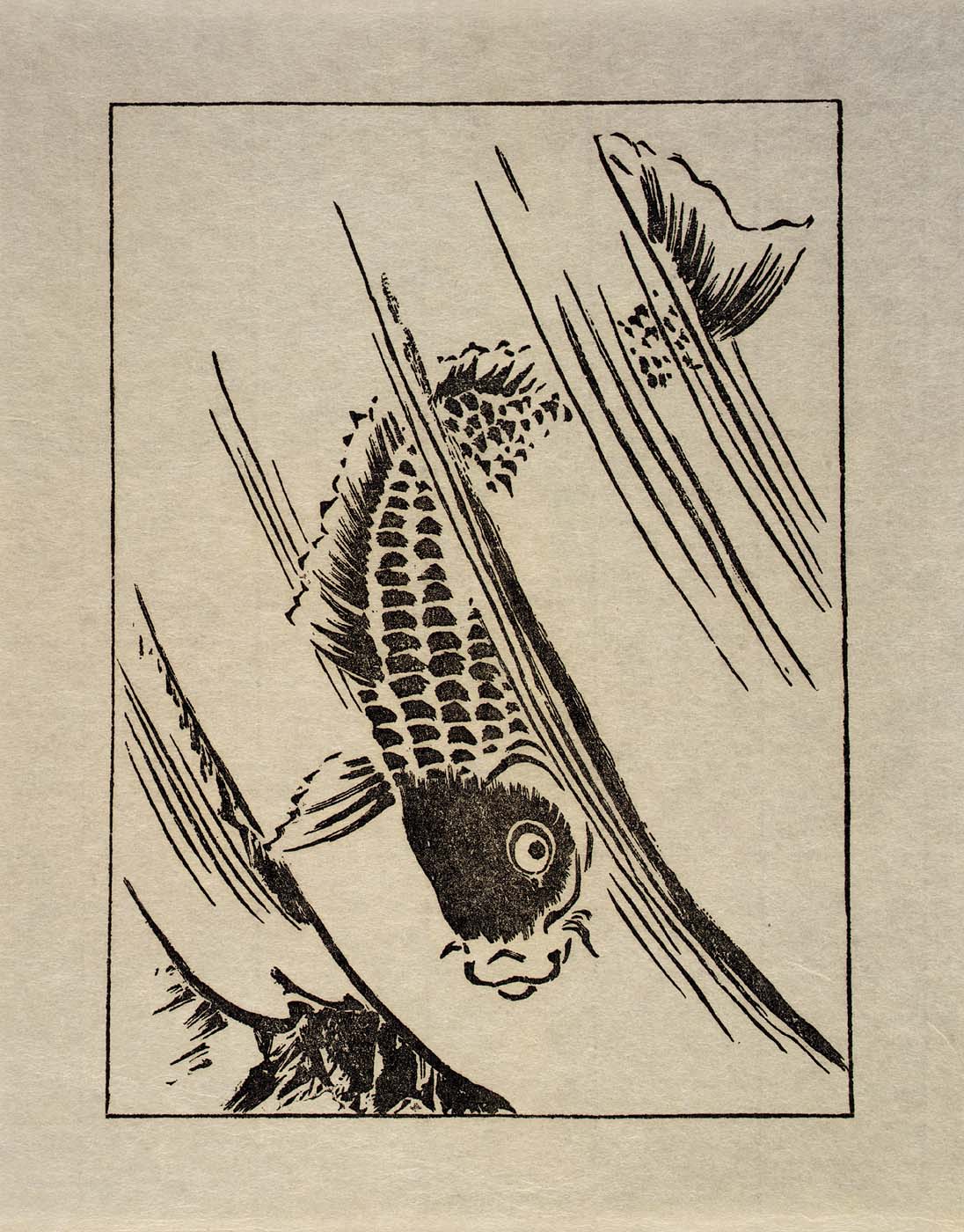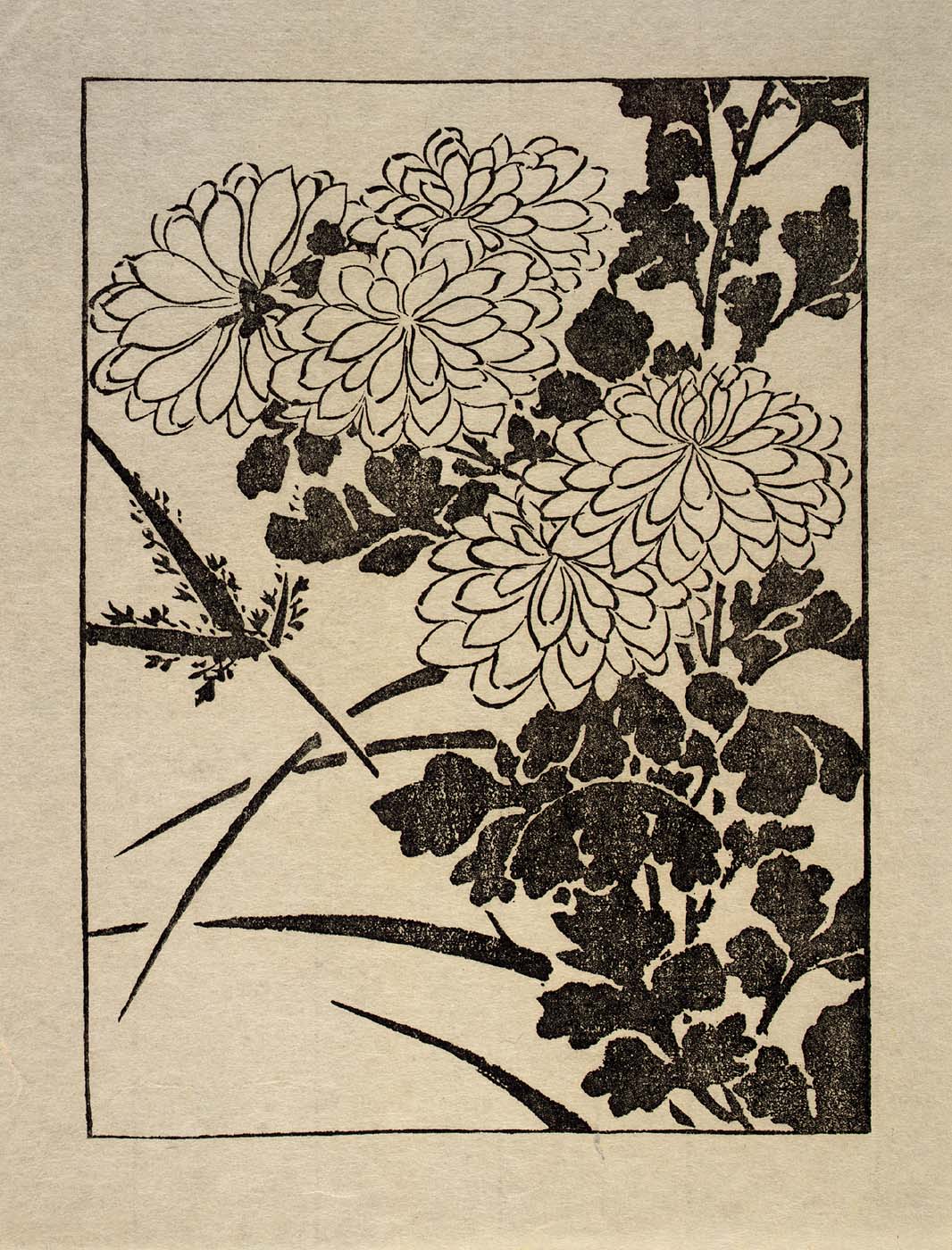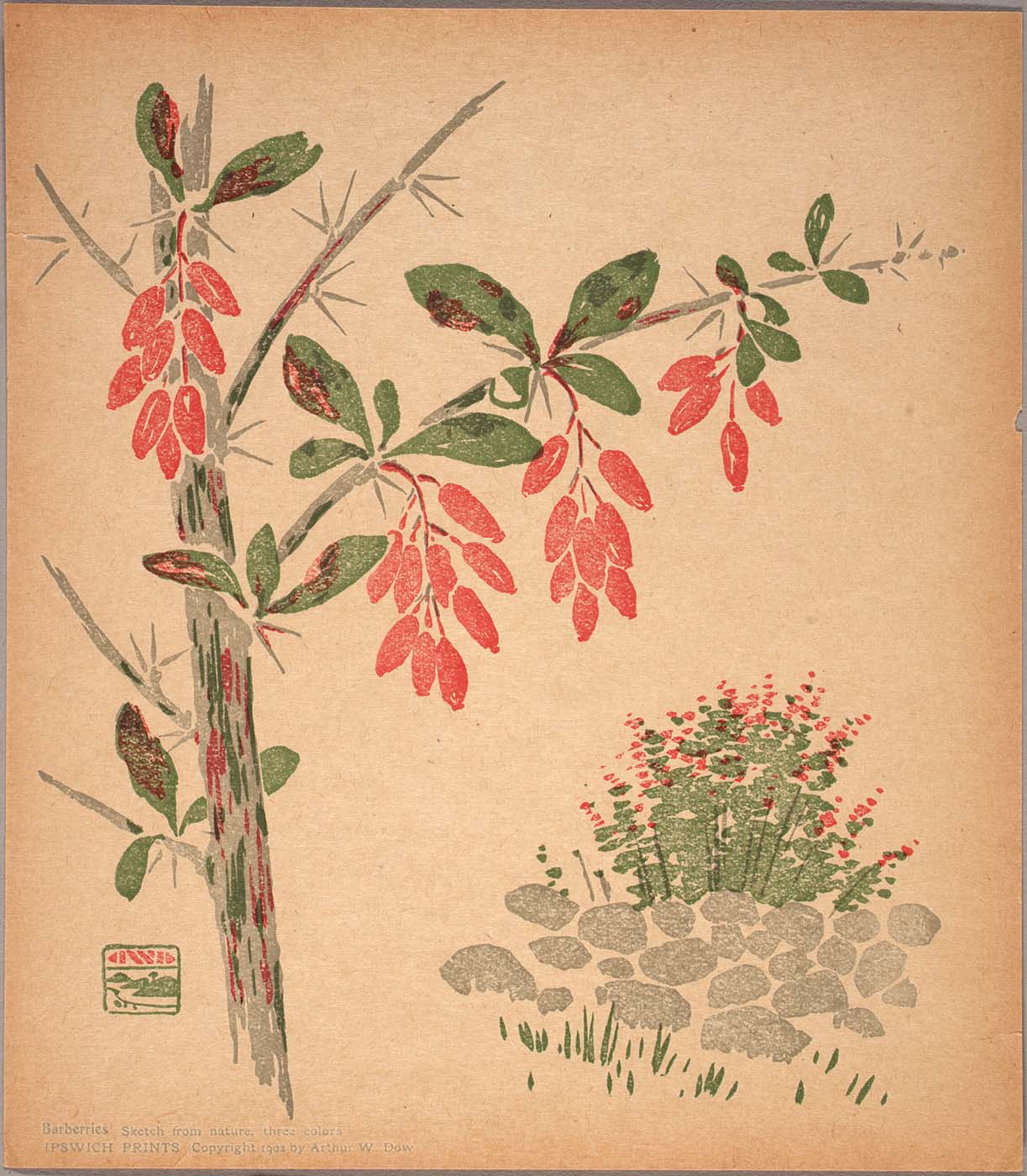Arthur Wesley Dow
Arthur Wesley Dow, born in Ipswich, Massachusetts, was initially influenced by the Barbizon-inspired work of fellow Bostonian William Morris Hunt. In 1884, Dow traveled to Paris to study at the Académie Julian and to paint on the coast of Brittany.
On his return to Boston he taught for several years. In 1895, however, his career was transformed by a meeting with Ernest Fenollosa, curator of the unrivaled collection of Oriental art at the Boston Museum of Fine Arts. Fenollosa introduced him to the wonders of the "floating world" (ukiyo-e), the great woodblock prints of Hiroshige and Hokusai, and opened up to him the recondite center of Japanese art: the conviction that art need not imitate nature but should develop organically from the formal abstract relationships of line, hue, and tone.
At about this time French painter Maurice Denis pronounced his famous dictum, which has since been regarded as a key to the contemporary aesthetic of painting: "Remember that a picture—before a war horse or a nude woman or an anecdote, is essentially a flat surface covered with colors assembled in a certain order." Perhaps more forthright than the Oriental statement, but much to the same purpose.
Dow continued to teach and disseminate his newly discovered aesthetic principles. In 1899 he published Composition, which provided students with a series of exercises that taught the manipulation of line, color, and tonal relationships within a composition. In 1903 he became head of the art department at Columbia University Teachers College, which further spread his ideas across the country, influencing the first generation of American modernist painters. It is not unlikely that his authority and impact as teacher greatly superseded his importance as a painter, a destiny that also found such luminaries as Benjamin West before him and Robert Henri after.
Emery Battis Artist Biographies for the exhibition American Impressionism: Treasures from the Smithsonian American Art Museum (Washington, D.C.: Smithsonian American Art Museum, 2000)


